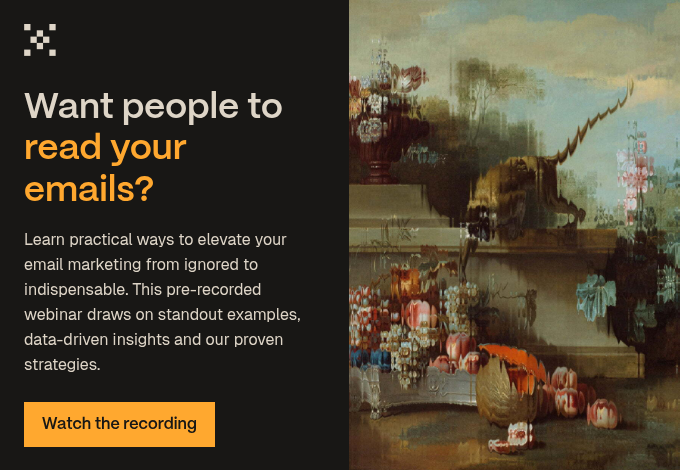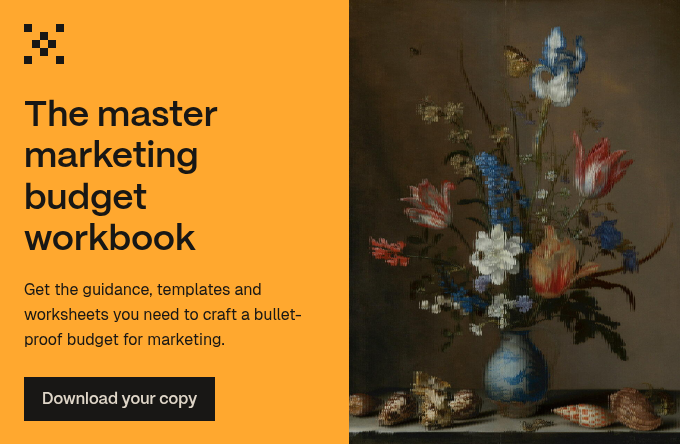What is a playbook, first of all? A playbook is a set of templates and scripts that you can use for a particular marketing or sales process. Often, it comes with step-by-step guidance for how to best use the templates, and the sequence in which these templates might be used.
For example, a playbook may consist of several email templates or snippets for use in marketing or sales emails.
It’s not quite the same as a process, but it can be used within a process to make it more efficient. Playbooks work alongside good processes, SLAs and automations to help you optimise your use of marketing technology and create a consistent brand experience.
Ideally, they are integrated into your CRM, ensuring that they exist as living, breathing documents rather than dusty, forgotten manuals.
The value of marketing and sales playbooks
Playbooks are how you go from using ten percent of what your tools are actually capable of, to using one hundred percent of those tools, to maximum effect.
Armed with this library of resources, you will bring the same value with less effort, improving your profitability with no discernible compromise to the quality of your outputs. In fact, having playbooks improves consistency overall, so you are more likely to produce your best work, every time and deliver a top-tier customer experience.
We’re willing to bet there are some things you do over and over again. For those projects, deliverables, campaigns and so on, you can save yourself some mental effort by making templates and step-by-step playbooks.
Think of the best restaurants. El Bulli is the classic example — praised equally for both innovation and consistency. The chef-team provided high-value offerings with minimal wastage and totally optimised levels of effort, night after night. This is what elevated the brand to greatness. Having playbooks, then, will help you on your path to a profit and value model, rather than a revenue and resources model. That’s how you get those Michelin stars.
Template ideas for marketing and sales
Google is your friend here. You can find many examples of playbooks and standalone templates online. In fact, on the Articulate Marketing website we have several useful playbooks in our resource library. For example, we have a playbook for inbound sales, replete with call scripts and template emails.
Here are some things you might want to create a playbook or template for:
- LinkedIn connect message: For outbound prospecting, you may find it helpful to start a relationship with a quick connect message on LinkedIn. Have a standard format for this and you can get a good number of connects done each week with minimal effort.
- Video/voice message script: Use a video or voice message script to help you say what you need to say to persuade a prospect and inform them about what you do.
- Negotiations/objection handling script: Another one for the sales reps. Have a list of common objections and how to handle them on-hand. Then, you can negotiate your way to deal without getting caught on the back foot.
- Proposal decks: When giving a proposal to a prospect, use a stand proposal deck as a base so you can put something together quickly and so you don’t miss out any key information.
You could also use templates for things like plans, strategic documentation and roadmapping, such as:
- SLAs: Have a standard format for your service level agreements and keep these with your standard operating procedures (SOPs), so they’re visible for everyone.
- Conversion plan: Use once per year to map out current numbers of site visitors, outbound and inbound leads and their percentage conversion rates as they are qualified through each lifecycle stage (e.g. Marketing Qualified Lead > Sales Qualified Lead > Opportunity > Client). Then, plan what you’d like to achieve next year. It can help to start from the number of clients and work your way back up to site traffic based on what you know about your conversion rates at each stage.
- Buyer journey: use once per year to map out the buyer journey from first-touch through to purchase and even beyond. Consider what activities your potential customer is doing, how they feel, what their expectations and goals are, what marketing channels or assets they may be engaging with and what metrics you might use to measure that engagement.
- Buyer persona: You can use a template to fill in your buyer persona and ideal client profile (ICP) information. A persona is a semi-fictional representation of your ideal customer. A template for a persona should include things like demographic information, job titles, goals, pain points and where they go to find resources online.
Email template ideas
Emails are a great place to start making templates for your playbooks because everyone uses them and they take a lot of time to write if you do them without a template. You can start your playbook journey by making a playbook of sales and marketing emails, for example. Here are some things you might want to include:
- Form-fill follow-up: After a lead has filled in a form to gain access to something like a white paper or a webinar, use a standard-issue follow-up email format to send the asset or link to their inbox.
- Book a meeting/assessment/demo: If things are going well, you’ll need to send a lot of these ‘book a meeting’-type emails. Have templates ready to go and you’ll save hours of time.
- Recommendations: If you offer services, then having a standard template listing what you do, with links to case studies or other resources, can be a helpful tool. Use it as a meeting follow-up email.
- About the company: People want to know who you are, not just what you do. Have a template email that’s all about your culture, values and history. That’s a story worth telling.
- Try again (and again): Not everyone will read the first email you send, or the second. Have a bank of ‘I tried to get in touch - did you have a chance to think about my last email?’ type email templates ready to go. Maybe email number seven will be the one that gets lucky.
- A fond farewell: Sometimes, you need to call it a day. If a prospect isn’t responding to you, use a friendly goodbye email template to end the (sadly one-sided) conversation on good terms.
Play-by-play: a system for success
Your mindset should be this: ‘What can I do to ensure my people are doing the most high-value activities possible to promote my business, engage with our target audience and win bigger, better deals?’
The answer isn’t sticks or carrots. It’s more about the systems you create: the technology, training, processes and playbooks. These are the things that make a difference.

 Posted by
Maddy Leslie
Posted by
Maddy Leslie





